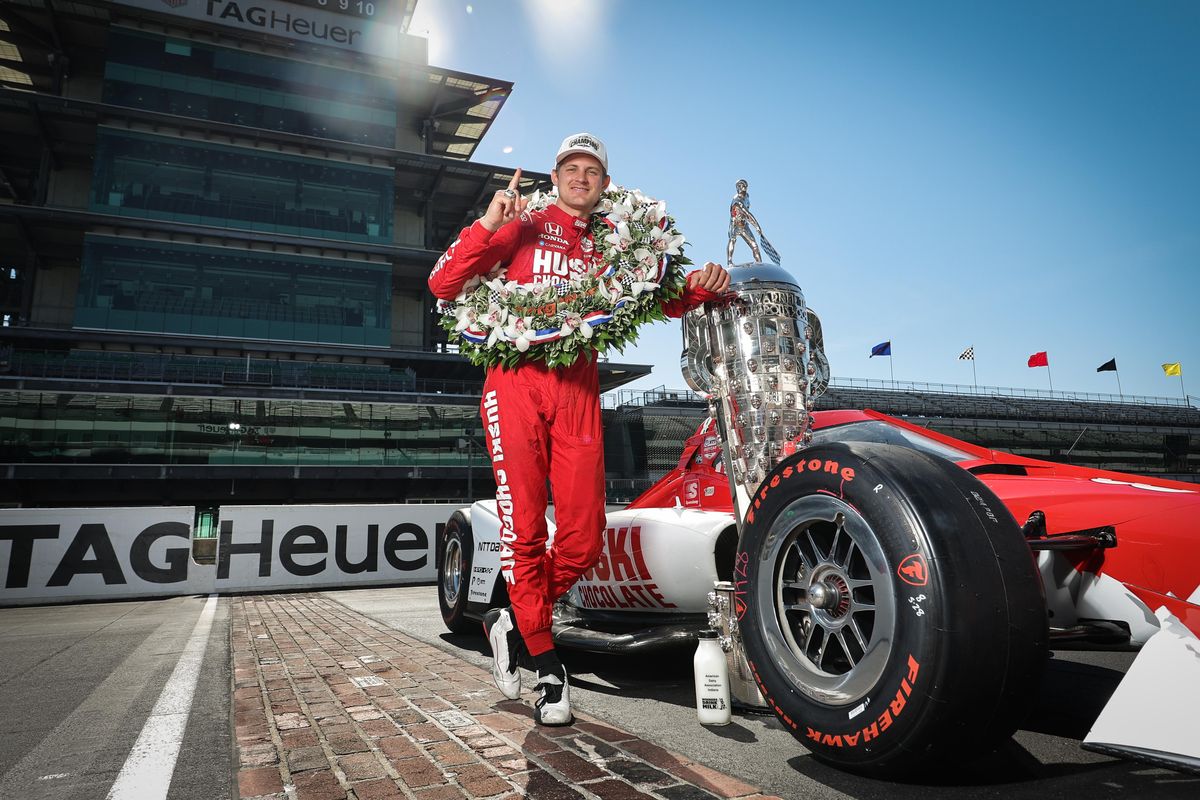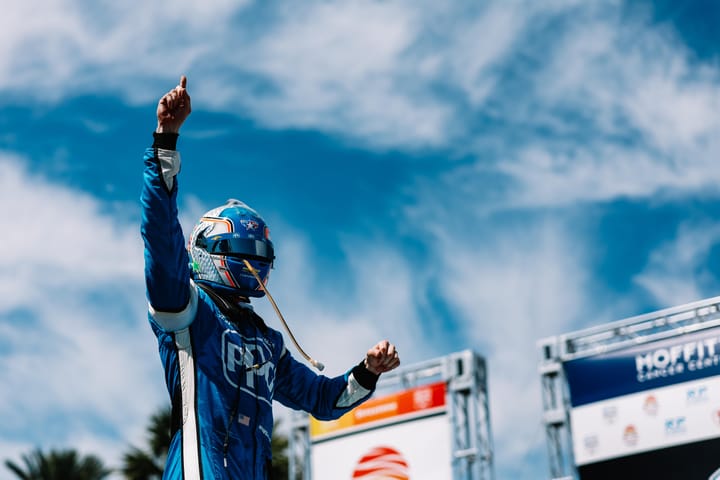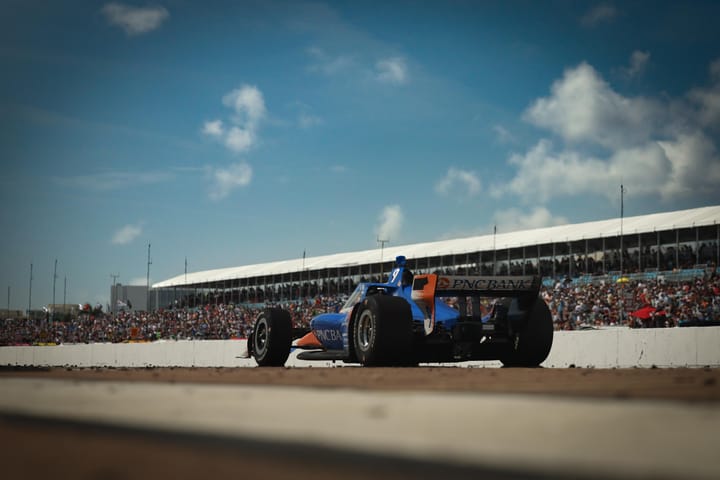Marcus Ericsson — the superstar in front of our eyes the whole time

The fastest team usually doesn’t win in racing. The best team — the one with the least mistakes, a fast car and a good strategy — almost always comes home with the trophy.
Marcus Ericsson and his team have been doing this for well over a year now, and it took the glory that comes with winning the Greatest Spectacle in Racing for everyone to realize it.
He’s a racing superstar, even if you hadn’t heard his name until 30 laps to go last Sunday.
Last June, Ericsson won his first IndyCar race at Belle Isle in Detroit, Michigan. It got overlooked when Will Power, who led most of the race, suffered a mechanical failure when the race was red flagged with just a few laps to go, giving the win to Ericsson.
Last August, Ericsson won the inaugural Music City Grand Prix in Nashville. It got overlooked when Colton Herta, the fastest driver all day, binned his car chasing down Ericsson late in the race — one of many incidents on the first-time circuit, including one where Ericsson went airborne after a stack up on a restart.

INDYCAR on NBC @IndyCaronNBCMarcus Ericsson gets airborne! Ericsson gets into the back of Bourdais, and the caution later comes out. TV: NBCSN Stream: bit.ly/WatchIndyCarLi…
August 8th 2021148 Retweets496 Likes
So, now he’s an Indy 500 champion. Are we surprised? It’s ok to say you didn’t expect the quiet, kind Swede to win.
He’s a great race car driver, clearly, but he’s never taken the media spotlight.
Ericsson drove for the back-marker Sauber Formula One team from 2014-18, scoring 18 championship points total through four seasons. A great accomplishment given the circumstances yes, but not anything you’d make the headlines with, especially with pre-Drive to Survive American F1 interest (much lower, for better or worse).
When he left F1, he joined Schmidt Peterson Motorsports (now Arrow McLaren SP), and only won the pre-Indy 500 pitstop competition (a title he and the team held for three years thanks to the pandemic). He spent time learning the cars, which are difficult beasts to tame, and improved bit by bit.
In 2020 he moved to Chip Ganassi Racing, a step up from Schmidt Peterson even in the highly competitive IndyCar paddock. He took a season to settle in, but by 2021 he was winning races. Now, he’s won the biggest race in the world.
Why was he overlooked by so many for so long?
Well, for one, his primary sponsor, Huski Chocolate, is not available in the U.S. Chip Ganassi pointed out in the postrace press conference that the seemingly delicious chocolate beverage brand is very supportive of its driver, and puts up enough money that they’re on the car every week (something only a handful of even big IndyCar teams can pull off anymore), but any additional promotion of Huski and its driver are only being seen in Sweden and Norway (for now).
Drive past a Napa Auto Parts and you’ll see Alexander Rossi’s face somewhere. Go to a HyVee grocery store and there will be an aisle dedicated to Jack Harvey. Ericsson is deserving of this treatment and gets it, just not stateside.
IndyCar is an international sport — despite the fact all of its races take place in the U.S. and Canada and American drivers make up the largest representation on the grid, though not as large a number as in previous decades.
When you look for success stories in IndyCar, the default reporting tends to favor success first, North American drivers second, and everyone else third. Ericsson, despite being successful, was so fresh to success he lived in the third category for a long time.
Athletes from all sports talk about being “disrespected.” Sometimes it comes off as an insincere ploy for attention or a tactic to get oneself into a competitive mindset, despite being a household name among a sport’s fanbase. Ericsson is one of the few athletes who can say with his full chest he was disrespected.
In the last 12 months, he’s scored the most championship points of any IndyCar driver. He also has the second most wins in that period with three, tied with Colton Herta and just behind Josef Newgarden’s four.
Ericsson is the best IndyCar driver in the series right now, and he was before he won the Indy 500.
Even after the race, it’s easy for fans to say he wasn’t “deserving” after his teammate Scott Dixon led the most laps before being taken out by a late race pit road speeding penalty, and seemed to luck into the lead after his faster teammates ran into issues.
Don’t let them fool you. Ericsson set the fastest lap of the race once he had clean air, and pulled immensely far away from Pato O’Ward, the eventual runner up, before the final caution. I can’t say I’ve seen a car pull a gap like that at Indianapolis since before 2012, when the series introduced a new chassis more conducive to overtaking. He was gone.
This week, Ericsson is going on the traditional media tour the 500 winner gets, already going to New York City to ring the Nasdaq opening bell and throw out the first pitch at yesterday’s Yankees game.
Maybe now Ericsson will get the credit he deserves, from everyone including myself.
The Indianapolis Star’s Nathan Brown wrote an article highlighting the specifics of Ericsson’s rise to the sport’s pinnacle, including the story of a sports reporter from Ericsson’s home town of Kumla, Sweden, who couldn’t find any Ericsson merchandise in Indianapolis. I was there, and Ericsson at least had a t-shirt, but compared to drivers like O’Ward, Dixon, Alex Palou and quite literally anyone else on a big team, he had practically nothing.
Now, Ericsson’s face will be on every ticket for next year’s Indy 500, the Borg Warner trophy for the rest of human existence, and he’ll forever be an Indianapolis 500 champion. Too bad it took us this long to realize how good he is.

NTT INDYCAR SERIES @IndyCar"I can't believe it. I'm so happy." A jubilant @Ericsson_Marcus basks in his #Indy500 victory. #INDYCAR // @CGRTeams
May 29th 2022450 Retweets2,669 Likes





Comments ()